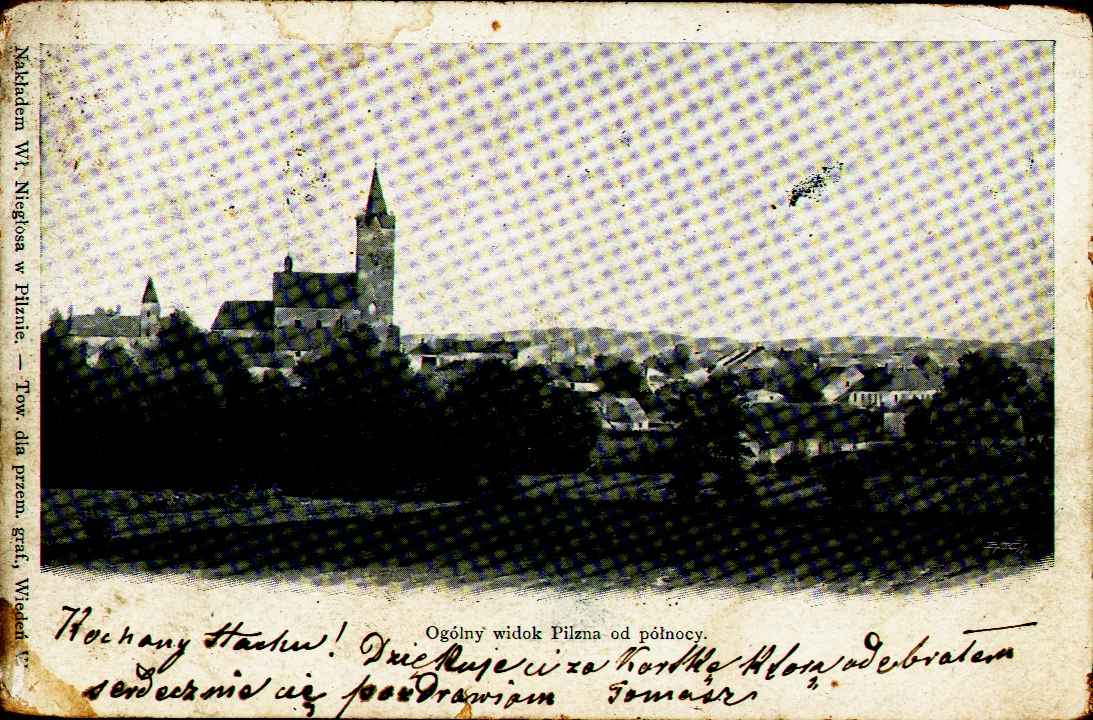| Alternateánames: Pilzne, Pilsno | 49░58' 21░18' |

1900 Postcard View of Pilzno |
King Kazimierz the Great decreed the founding of Pilzno in 1354. The first arrival of the Jews in Pilzno is thought to have been in 1560. There is a lack of records up to 1560. Records of 1564 mention three Jewish farm-owners, and two Jewish tenant farmers. Official records of 1576 indicate that three Jews lived in Pilzno. King Stefan Batory in 1577 ordered the Jews evicted from Pilzno and forbade them to settle in the town or vicinity. In practice, however, this ban was inconsistently observed. The Pilzno city council issued a decree in 1635 prohibiting Jews from selling in the town's market. In 1814 the head priest of Pilzno in his report to the Bishop mentioned that there are no Jews in Pilzno. The Jews lived, however, in neighboring villages and came to the market. "Altogether there are nine Jewish families in the parish," he wrote. Jews had an Inn near the parish church in 1760 but none of them had the rights of citizens. In 1772 Poland was divided among the three neighboring powers: Russia, Austria, and Germany. The section of Poland that was given to Austria, which included Pilzno and its environs, was known from then on as Galicia. In 1787 a decree was issued that the Jews of Galicia were required to take on German family names, starting in January 1789. The Austrian government created a local council in Pilzno in 1830 and admitted Jews to the town. The first Jew who received the right/approval of the city to live in Pilzno was Aron Ader, a barber/surgeon, from Dembitz, in 1830. After him more Jews moved to Pilzno. In 1880, according to the census, Pilzno had 2128 residents, of whom 551 were Jews. In 1900 the Census in Pilzno showed 2138 residents and 707 Jews. The early Pilzno Jews belonged to the synagogue in Tarnow. In 1873 the Jews of Pilzno organized a separate religious community with Aron Seelenfreunden as their leader, and members Jacob Ader and Mendel Kornhauser. From a Pilzno citizen they bought a wooden house which they transformed into a synagogue and next to it they built ritual baths. They also purchased some land for a cemetery. They built a brick and stone wall around the cemetery and at its entry there was a wooden structure for the preparing of bodies for burial. Before the establishment of the cemetery Jews buried their dead in Dembitz. For more history of the Jews of Pilzno, click here. |